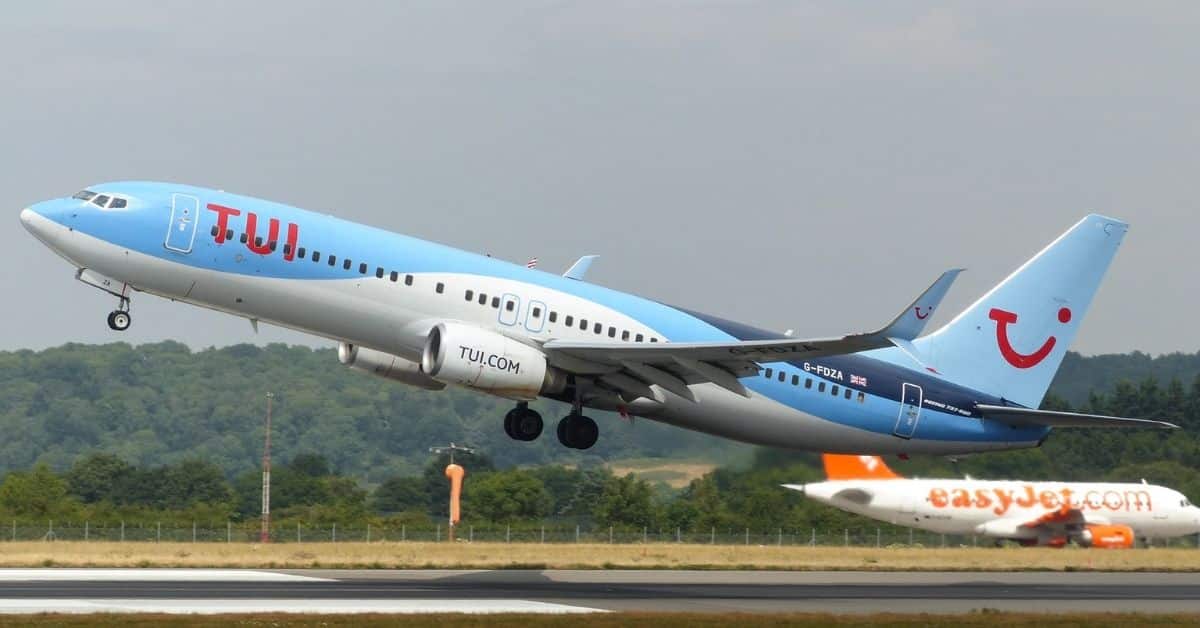The approach speed and profile for the Boeing 737-800NG depends on several variables like any aircraft. However, there is generally a typical profile that most operators tend to use for the type.
An important element in this regard concerns the flap settings most commonly used by operators.
It is common for a Flap 30 approach and landing to be performed. Although the 737-800 is capable of up to Flap 40, Flap 30 is preferred in most instances of operation due to reduced load on the flaps, prolonging service life.
Flaps 40 is typically selected for shorter runways and/or a steeper approach path.
The landing weight also impacts the flap setting, with heavier landing weights warranting a higher approach and landing speed for the aircraft.
The appropriate approach and landing speeds (Vapp and Vref respectively) are calculated on the Approach Ref page of the Flight Management Computer (FMC).
B737-800 Flap Limiting Speeds
This flap setting is incrementally selected through the various degrees of flaps available. The 737-800 flap speed limits for each increment is as follows:
Flaps 1: 250 knots
Flaps 2: 250 knots
Flaps 5: 250 knots
Flaps 10: 210 knots
Flaps 15: 200 knots
Flap 25: 190 knots
Flaps 30: 175 knots
Flaps 40: 162 knots
The operator’s Standard Operating Procedures (SOPs) may be higher than these figures, as these speeds are the certified flap design limits for the aircraft.
B737-800 Vapp and Vref Speeds
With these figures taken into account, the Vapp (Approach Speed) for the 737-800 can vary based on Air Traffic Control (ATC) speed restrictions and distance to the runway.
In relation to landing or touchdown speeds, the Vref (Touchdown Speed) of the 737-800 can range based on landing weight, winds, and selected flap setting.
Generally, this Vref speed is a 1.3x multiple of the aircraft stall speed, which provides an adequate safety margin. In addition to this, there may also be a 5-10 knot added to this to account for wind conditions.
With these factors taken into account, the landing speed of a 737-800 generally ranges between 130-150 knots.
How Flaps Affect Approach Speed
Extending the flaps increases the wing surface area, which causes the lift coefficient of the wing to increase. In order to land at slower speeds, a higher degree of flap settings is required to decrease the stall speed of the aircraft.
Without flap extension, the landing and approach speeds of the aircraft would be too high, as runway landing distance would be exponentially increased.
Landing at a higher speed when the aircraft is at a heavy landing weight may also have structural implications.
Standard Operating Procedures (SOPs)
As stated previously, the specific approach and landing procedures for the 737-800 are dependent on the operator. There may be some variations to the speeds and procedures listed above based on the operator’s SOPs.
The speeds and procedures referenced above are based on the manufacturer’s certified design limits.
Read More:
Can an A320 Fly Over The Atlantic? | Narrowbody Transatlantic Operations
A320 Fuel Burn Per Hour | Airbus A320 Fuel Consumption
This is an updated article. Originally posted on December 12, 2021 @ 8:14 pm

After visiting more than 60 countries, I have probably been on every type of plane there is and visited countless airports. I did my very first international solo trip to South Africa at the age of only 16 and haven’t really stopped traveling since.
Despite the adventurous travel itch, I do have a nerdy side as well – which is satisfied by writing about all things aviation “too boring” for my regular travel blog.
